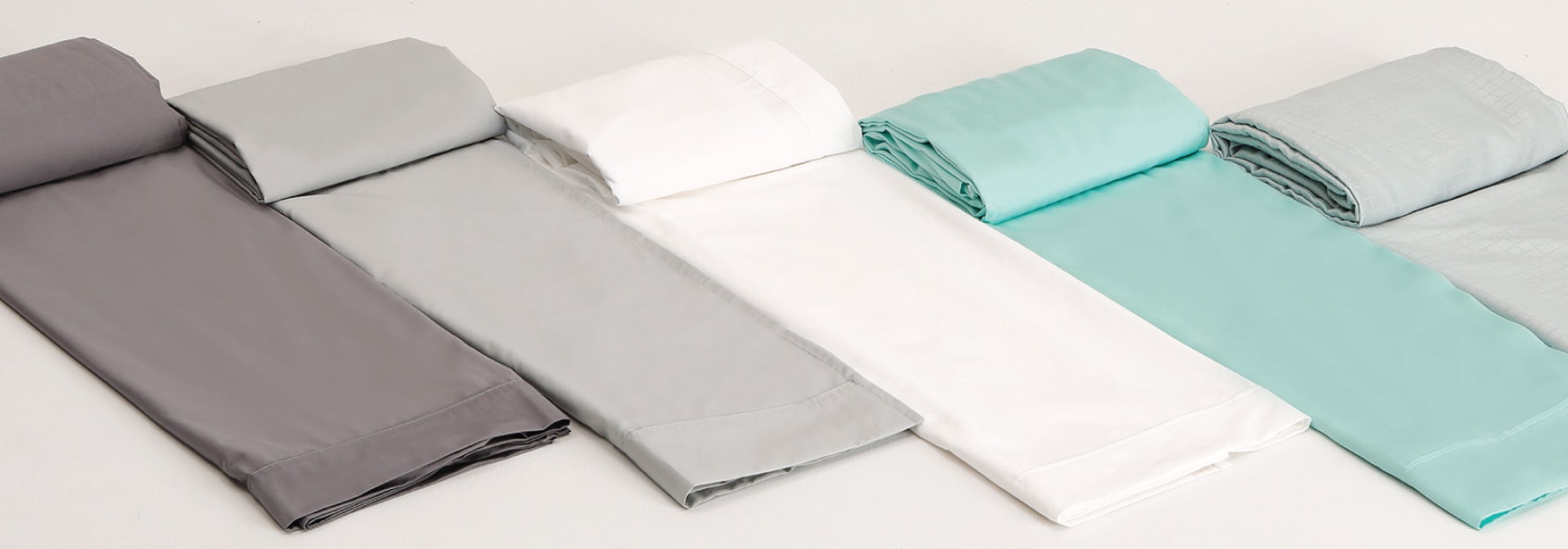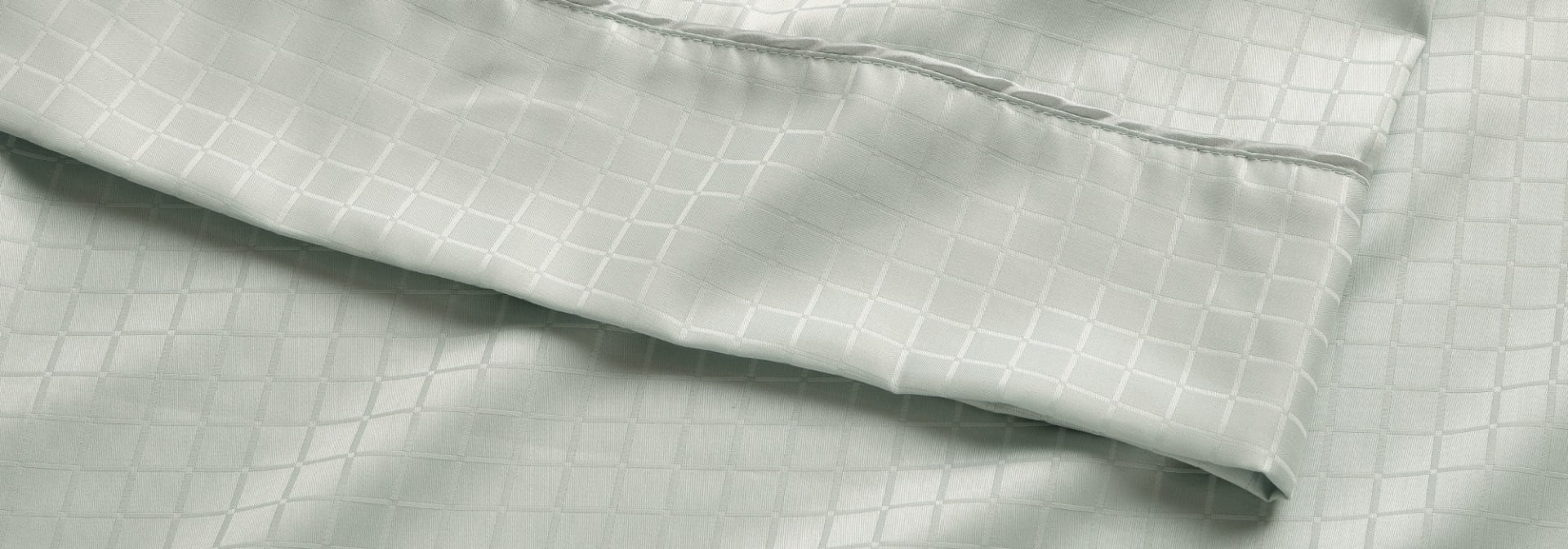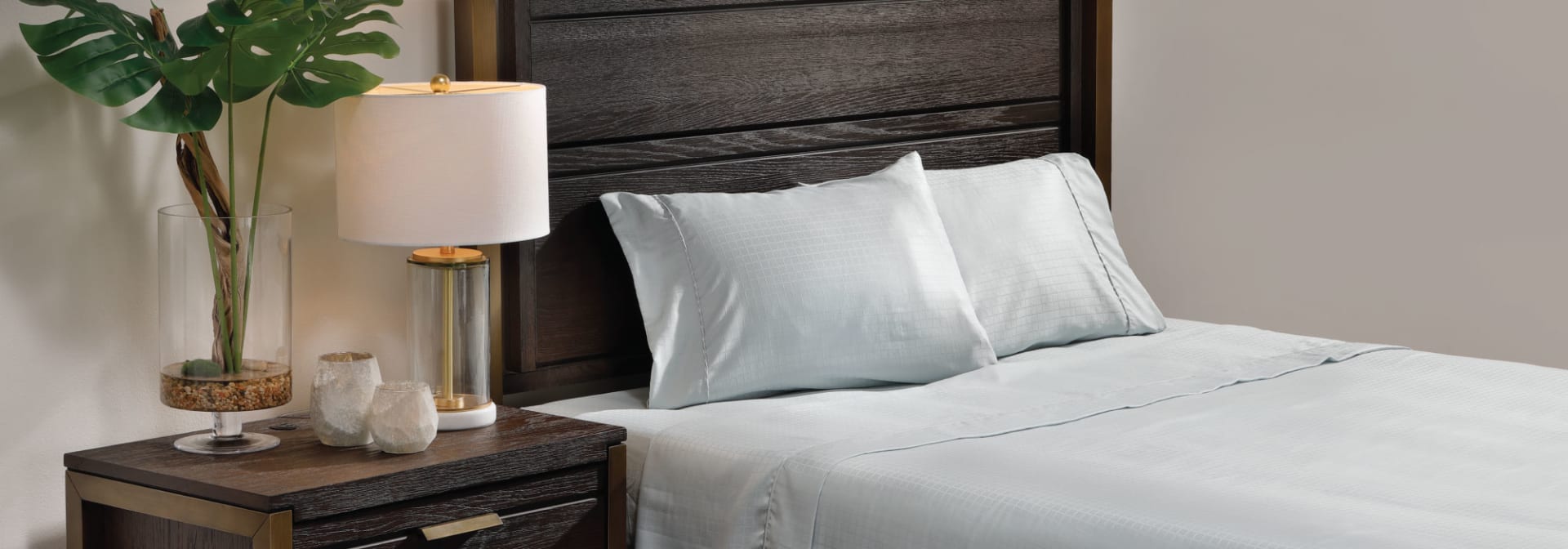Bedding Guide: Unlocking the Secrets to Better Sleep
Are you still struggling to get a good night's sleep, even after buying a new mattress or pillows? If so, you might want to look closer at your bedding situation. While they might not be the first thing that comes to mind when you think about sleep quality, studies show that the type of sheets and bedding you use can significantly impact how well you sleep.
So, how exactly do sheets and bedding help improve sleep quality? Below, we’ll break down exactly how bedding can affect sleep quality and what steps you can take so your sheets are suited to your needs.
Popular Bedding Materials

Let's talk about the different types of materials and fabrics you can choose from when it comes to sheets and bedding. When selecting sheets, you should definitely consider factors like breathability, softness, and temperature regulation to help improve your sleep quality.
- Cotton: Cotton is one of the most popular fabrics for bedding, and for good reason. It's soft, breathable, and moisture-wicking, which can help regulate your body temperature and keep you comfortable throughout the night.
- Silk: Silk is also a great option for bedding, especially if you're looking for something luxurious and soft. Similar to cotton, it’s also breathable and temperature-regulating to keep you comfortable while you sleep.
- Microfiber: Microfiber is a bedding option that delivers a silky-soft feel that rivals luxury fabrics while still keeping price tags low. It's iIt’s naturally hypoallergenic, quick-drying and built to withstand endless wash cycles without fading or losing shape.
- Bamboo: Bamboo is an increasingly-popular bedding choice. Bamboo sheets are soft and luxurious to the touch, and they naturally help regulate body temperature and wick away moisture to help keep you cool. On top of this, bamboo bedding is durable, eco-friendly, and hypoallergenic.
How Do You Choose the Right Sheets?

1: Comfort is Crucial
What makes a set of sheets truly comfortable? It’s all about the feel of the fabric against your skin, and, often, this comes down to which material feels right for you. Sheets made from natural fibers like cotton, silk, or bamboo tend to be gentler, more breathable, and offer superior temperature regulation—keeping you cool when it’s warm and cozy when it’s cold. Choosing the right bedding gets a lot easier once you know which bedding material works for you.
What About the "Thread Count"?
Surprisingly, comfort has less to do with thread count than you might think. Thread count refers to the total number of threads woven into each square inch of fabric. For years, shoppers have been led to believe that a higher thread count always means softer, better sheets. The reality: that’s just clever marketing.
The real secret to comfort is the quality of the cotton or fiber itself—not just the number.
- Sheets at a 200-400 thread count can actually be quite comfy, if made from quality material (such as single-ply, long-staple cotton sheets).
- High thread counts can sometimes be deceptive, as some are achieved by twisting lesser-quality, shorter fibers together (multi-ply yarns). Sheets made this way can feel rough, heavy, and wear out more quickly.
*If you love super-soft sheets, look for those with a sateen weave for a smooth, silky finish - or try a percale weave for a crisp, cool feel!

2: Temperature Impacts
Ever wake up tossing and turning—too hot one night, too chilly the next? The right bedding can make all the difference. For true comfort, it’s all about how well your bedding helps regulate body temperature while you sleep.
The real game changer? Breathability and moisture control. Natural fibers like cotton and bamboo are top picks because they “breathe”—letting heat and sweat escape instead of trapping them under the covers with you. If you tend to sleep hot, then you should definitely opt for breathable sheets and bedding!
- Don't forget, you can also swap out sheets according to the season. In warmer months, choose lightweight cotton or airy linen sheets for that cool, fresh feel. When the nights turn chilly, layering up with flannel, brushed cotton, or a knit blanket delivers cozy warmth… no heavy, suffocating piles required!

3: Cleanliness Counts
Once you’ve found sheets that work for you, consider cleanliness. Dirty or unwashed bedding can harbor dust mites, bacteria, and other allergens that can affect your respiratory system and disrupt sleep.
- It's crucial to wash your bedding regularly and use gentle, hypoallergenic detergents. You might also want to invest in a mattress protector to keep your mattress clean and free of dust mites or other possible allergens.
What About Mattress Protectors?

Do you think of mattress protectors as “optional”? Think again! If you like your mattress fresh, comfy, and lasting for years, a quality protector is your best friend.
- Guard Against Spills & Stains: A waterproof mattress protector acts as a first line of defense. Spills, sweat, or kiddo accidents? No problem. And here’s a pro tip: most mattress warranties won’t cover you if your bed is stained, so a protector keeps your investment safe.
- Block Dust Mites & Allergens: Dust mites love mattresses, but allergy sufferers do not. Choose a fitted or encased protector to keep allergens and microscopic critters at bay.
- Keep That “New Mattress” Feeling: Over time, body oils and nightly sweat can break down mattress foams—making beds feel older, flatter, and less supportive. A washable mattress protector shields against all that, so your bed stays like-new for longer.
- Cool-Down Tech, Upgraded Sleep: If waking up hot and clammy is your norm, look for new protectors with phase-change fabrics. These clever layers absorb excess body heat and release it as you cool down, helping you avoid those 2 a.m. sheet flips.